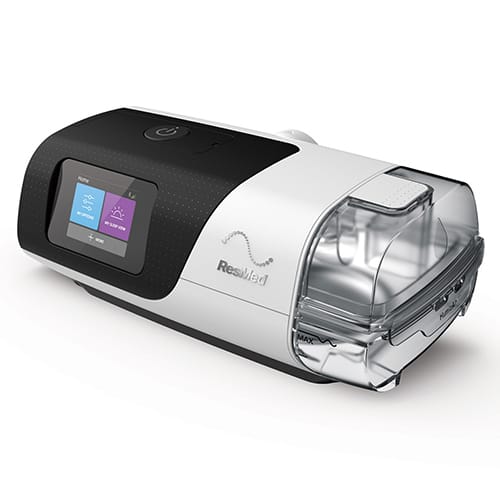Introduction
What Is Accounts Payable Automation?
Accounts payable automation refers to using software and services to streamline and digitize the process of handling supplier invoices and payments. It replaces manual tasks—such as invoice entry, paper routing, and approval—with automated invoice capture, workflow routing, payment execution, and reporting.
Importance in Europe
In Europe, businesses face strong pressure to reduce costs while enhancing transparency. The rise of regulatory standards, e‑invoicing mandates, and digital transformation initiatives has made accounts payable automation a key enabler for more secure and efficient finance operations.
Market Overview
Market Size and Growth Forecasts
The Europe market generated approximately USD 885 million in 2023 and is expected to grow to between USD 1.9 billion and USD 2.15 billion by 2030, with a CAGR between 11% and 13.5%
Another source pegs the market at USD 910 million in 2023, growing at 10.6% CAGR through 2031 This robust growth aligns with global trends—Europe holds nearly 28–29% of global AP automation revenues
Market Segmentation
By Component
-
Software Solutions – Steady demand across large and mid-sized enterprises; considered the largest and fastest-growing segment
-
Professional Services – Includes implementation, consulting, and training; also gaining traction as complexity and compliance needs rise.
By Deployment Mode
-
On‑Premise – Remains dominant in 2024 (~USD 559 million) but faces moderate growth
-
Cloud/SaaS – The fastest-growing deployment, expected to reach or exceed 60% share due to scalability and remote access benefits
By Organization Size
-
Large Enterprises – Largest adopters, representing around USD 600 million in 2024, with steady growth
-
SMEs – Seeing rapid uptake due to cloud platforms and cost-effective pricing models.
By Process
-
Invoice Capture – Largest and fastest-growing process segment, reflecting high ROI in digitizing invoice data
-
Invoice Approval, Payment Authorization, Execution, and Export – Also growing as automation expands end‑to‑end.
By Vertical
-
Manufacturing – Leads the sector (largest share, ~14.9% CAGR)
-
BFSI, IT & Telecom, Retail & Consumer Goods, Healthcare, Government, Energy & Utilities, Automotive – Show increasing adoption, especially where payment volume and compliance pressure is high
Regional Insights
Germany
Germany holds the single largest national market in Europe and is expected to reach around USD 345 million by 2028 . Strong industrial base and early digital adoption drive implementation.
United Kingdom
The UK market maintains a healthy 9.7% CAGR through 2028, with strong adoption across finance, manufacturing, and services .
France
France shows robust growth (~11.5% CAGR through 2028), driven by both public and private sector investments
Southern & Eastern Europe
Markets including Spain, Italy, Russia, Turkey, and smaller EU economies are catching up through cloud-based adoption and regulatory digitization .
Market Drivers
Digital Transformation & E‑Invoicing Mandates
Europe’s push toward digital financial reporting and e‑invoicing (e.g., in public sector procurement) is a powerful catalyst. AI-driven invoice capture and OCR minimize errors and promote faster cycle times
Efficiency & Cost Savings
Automation can reduce AP processing costs by 40–60%, cut human error, and free up staff to handle exceptions. Machine learning further boosts efficiency via PO matching, duplicate detection, and anomaly alerts .
Compliance & Fraud Reduction
AP automation platforms support audit trails, user-access controls, and fraud detection. Compliance with GDPR and financial governance rules is a clear motivator for adoption .
Market Challenges
High Implementation Costs
For many mid-sized firms, the initial investment in ERP integration, data migration, and change management can be daunting—even with cloud platforms.
Integration with ERP & Legacy Systems
Seamless integration with systems like SAP, Oracle, and Microsoft Dynamics often requires complex mapping and custom APIs—limiting adoption speed in some organizations.
Data Security & Regulatory Risk
Financial and supply chain data carry high sensitivity. Breaches can lead to regulatory penalties and reputational damage, making cybersecurity investment essential.
Technology Trends
AI, ML, and RPA
Europe is embedding artificial intelligence, machine learning, and robotic process automation in AP workflows—enabling autonomous invoice processing, predictive payment timing, and decision-making automation .
Cloud‑Native & Modular Platforms
Cloud-first vendors offer scalable, subscription-based models, allowing businesses to implement AP automation module-by-module—simplifying ROI justification.
Analytics & Cash Flow Forecasting
Automated platforms now provide real-time spend insights, supplier analytics, and cash flow forecasting, helping finance teams move from operational execution to strategic decision-making.
Competitive Landscape
Major players in the Europe market include:
-
SAP SE, Sage Group, Tipalti, Zycus, Coupa, Bottomline, Comarch, AvidXchange, FinancialForce, FIS, Tungsten Automation, ReadSoft
These vendors compete based on integration capabilities, AI intelligence, vertical specialization, and support services, increasingly leveraging partnerships and acquisitions for growth.
Notable European-focused firms:
-
Tipalti (Israel/Netherlands-based fintech with strong AP/payments platform)
-
Tungsten Automation (formerly Kofax)—strong in document capture and e-invoicing
-
ReadSoft—recognized OCR and invoice capture specialist, integrated with SAP and Oracle .
SWOT Analysis
| Strengths | Weaknesses |
|---|---|
| Proven cost savings and efficiency gains | Significant upfront costs and disruptive change |
| Compliance support and fraud detection capabilities | Complexity of ERP integration and legacy systems |
| Rapid adoption of cloud and AI‑workflow models | Security concerns over cloud and financial data |
| Opportunities | Threats |
|---|---|
| SME adoption via scalable cloud platforms | Cybersecurity risks and regulatory fines |
| Advanced predictive analytics for cash flow | Competition from low-cost or bundled ERP modules |
| Expansion into invoice-to-pay and procure-to-pay | Macro issues: inflation, recession, vendor consolidation |
Future Opportunities
SME Uptake via Cloud-first Tools
Simplified, self-service AP automation platforms can attract mid-market companies currently underserved by legacy-based vendors.
Invoice-to-Pay and Procure-to-Pay Suites
Vendors offering full order-to-cash automation—AP along with procurement—can capture larger wallet share and drive deeper digital transformation.
Predictive Cash Management
Linking AP data with real-time cash analysis and modeling enables businesses to optimize working capital, invoice timing, and supplier terms.
ESG and Sustainability Tracking
AP workflows can integrate carbon footprint tagging and supplier sustainability scoring, supporting broader environmental, social, and governance frameworks.
Conclusion
The Europe Accounts Payable Automation Market is entering a golden era. With the region’s strong push toward digital finance, e‑invoicing mandates, and AI innovation, finance functions are transforming from transaction-focused hubs into strategic decision centers.
Despite challenges like integration complexity, cost concerns, and data security, the benefits are compelling: lower costs, quicker processing, stronger compliance, and better financial insight.
As adoption spreads beyond large enterprises to mid-market firms, and platforms evolve from invoice capture to full procure-to-pay suites, Europe is poised to lead global innovation in AP automation—and reshape how businesses manage supplier relationships, cash, and risk.
Get More Details : https://www.databridgemarketresearch.com/reports/europe-accounts-payable-automation-market
Get More Reports :
https://www.databridgemarketresearch.com/reports/global-epilepsy-monitoring-devices-market
https://www.databridgemarketresearch.com/reports/north-america-sulfate-potash-market
https://www.databridgemarketresearch.com/reports/global-ammonium-chloride-market
https://www.databridgemarketresearch.com/reports/global-new-energy-vehicles-market







0 Comments